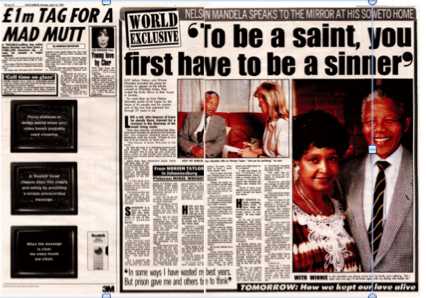When fiction becomes fact: can we trust the internet?
A series of hoaxes have flown around the internet. But what happens when news sites report fiction as fact, delighting then disappointing their readers?
A story went viral of a man live-tweeting his interactions with a woman on the plane – was revealed to be fake. At the same time a Twitter conversation between a comedian and an American salsa brand – which appeared to result in employees being fired and had shot, sneeze-like across the internet – was confirmed as a hoax.
BuzzFeed is a lot of things. It's a gallery of grinning dogs. It's a thousand comedy lists about the 90s. It's a scrolling advert, a comic sports site, a politics blog, a moving newspaper, and its ad revenues this year are estimated to be $40m. As it stretches across our consciousness like clingfilm, its responsibilities are being called into question more and more. As a news organisation, profiting from the stories it shares, shouldn't it be verifying them before it publishes? And if this continues to happen – if it repeatedly reports on fictions as if they're fact – then won't it start to lose us, its fast-clicking readers? We don't expect every story posted by a stranger on Twitter to be true, but we do expect every story reported on by a huge media organisation to be, because that's what they're for. The point of them is to filter through the daily mess of culture and to repackage it for us in witty, bite-sized, trustworthy chunks. The more they mess up, the less we'll return.
That we see isn't always true, the internet can be edited. Television is an illusion - we believe what we see. This article talks about the issues about publishing newspaper articles, nobody verifies them before publishing, however they make profit, and a moving newspaper and it's ad revenue this year are estimated to be $40m. A story written by a reality TV producer then reported as fact by an international media company (BuzzFeed's post got almost 1.5m views) and shared frantically by those who think it's real.Also, on twitter we won't expect every story posted by a stranger to be true. However, we expect every story report by media to be true. This is because of the authority they hold, and the power, they are able to engage audiences and can fool them into believing anything and everything is true, as audiences are fooled to believe the articles have been verified beforehand and are official, even though they may not be verified. Also, the internet is harmless, nobody gets hurt, but it affects how we engage online. We will be led to trust less and enjoy less. In the long-term it is said that our lives will become fractionally worse, but the issue lies not with the storyteller, it lies with the sites that share it.
